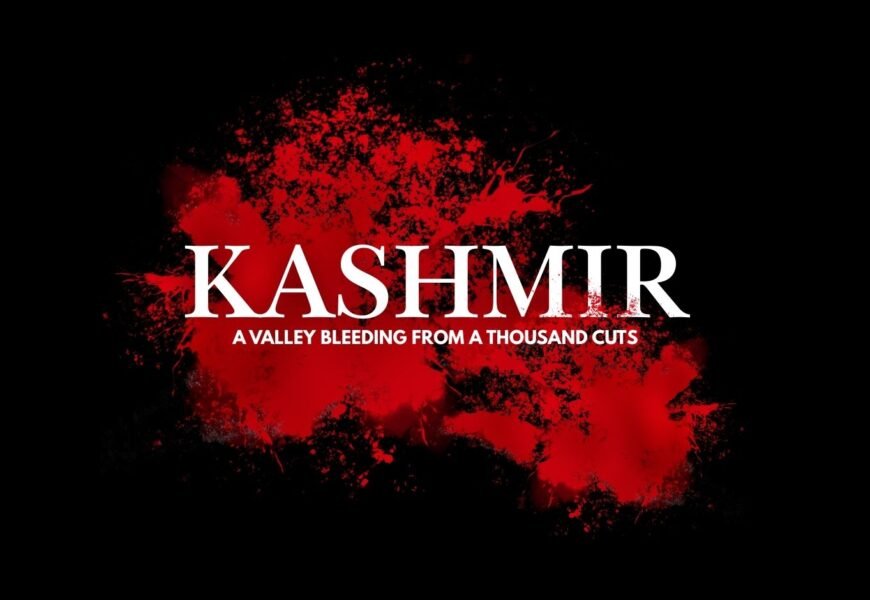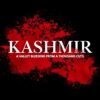There’s a moment, right before the descent into the Kashmir Valley, when the snow-lined ridges part just enough to show you what paradise might’ve looked like before we ruined it. The air turns crisper, the pine forests open like old pages, and there’s a stillness that almost tricks you into forgetting.
Almost.
Because beneath that postcard surface, Kashmir has been bleeding for decades. Slowly. Relentlessly. And never quite the same way twice.
The headlines come and go—militant ambush, security lockdown, ceasefire violation, another teenager picked up in a night raid, but the deeper story? That’s harder to hold onto. It’s messy. Politicized. Caught between powerful narratives and powerless people. And it’s worth asking: how did we get here, and how much more can this land take?
The Conflict Before the Guns
We usually start the story in 1989, but the roots stretch far earlier. To 1947, when colonial borders were drawn with a careless, bloody hand. Maharaja Hari Singh’s decision to accede to India, after Pakistani tribal militias invaded Kashmir, might’ve been legal. But was it legitimate in the eyes of his people? That’s still debated.
Then came Sheikh Abdullah. Initially a supporter of India’s secular promise, he would later be jailed by the very state he allied with, accused of harboring separatist dreams. The promised plebiscite never came. Trust began to crack.
Through the ’50s and ’60s, Delhi promised autonomy but delivered control. Political manipulation, interference in elections, and a growing disconnect between Srinagar and New Delhi gradually turned a regional identity crisis into a question of existential betrayal.
By the ’80s, something had shifted. What was once a Kashmiri nationalist movement began absorbing Islamist overtones, fed in part by the global surge of jihadist ideology post-Afghanistan and the growing hand of Pakistan’s military-intelligence complex.
The Rise of the Gun
1987 was a turning point. The state elections, widely seen as rigged, crushed the democratic aspirations of a generation. Disillusioned youth, robbed of peaceful recourse, crossed the border for training. Many didn’t come back the same.
Insurgency exploded in 1989.
Groups like Hizbul Mujahideen, backed by Pakistan, took center stage. Soon after, more lethal actors entered the arena—Lashkar-e-Taiba, Jaish-e-Mohammed. With them came suicide bombings, targeted killings, and ideological hardening. Violence became both tactic and identity.
The ’90s were brutal. The exodus of Kashmiri Pandits. Massacres like Wandhama. Kunan-Poshpora. Crackdowns. Cordon and search operations. And in between, ordinary life tried to survive.
Fast forward to recent years—Pulwama in 2019, Pahalgam in 2025—the patterns haven’t changed much. Only the weapons have.
A Doctrine of Bleeding Slowly
The phrase “death by a thousand cuts” wasn’t coined in Rawalpindi. But it found new life there. After losing conventional wars, Pakistan adopted this asymmetric warfare doctrine—small, sustained wounds designed to exhaust rather than kill outright.
Infiltration became policy. Terror groups, while “banned,” continued to receive arms, training, and safe haven. Psychological warfare evolved too. WhatsApp rumors, deepfake videos, and encrypted channels became as dangerous as Kalashnikovs.
ISI, long accused of pulling strings behind non-state actors, blurred the lines between deniability and direct control. The strategic objective? Keep India entangled. Keep Kashmir boiling. Undermine any sense of normalcy.
The Price Kashmir Pays
The Economy
Tourism, once the Valley’s economic lifeline, remains fragile. After the Pahalgam 2025 incident, ₹1,000 crore worth of bookings vanished in a week. Investors hesitate. Infrastructure projects stall. Handicraft exports decline. The land is rich, but its promise feels perpetually deferred.
Society
Mental health is a silent casualty. A 2023 study by MSF found nearly 45 percent of Kashmiri adults show symptoms of psychological distress, PTSD, anxiety, and depression.
Education, too, suffers. School shutdowns have become routine. Entire academic years are lost to curfews or conflict. For a young population, hope thins out.
And unemployment? Alarming. As of late 2023, the Valley’s youth unemployment rate stood at 34.8 percent, 58.5 percent among educated women. For some, militancy isn’t a cause. It’s a paycheck.
India’s Response: Between Iron and Intent
The Indian state has responded with a mix of military force and administrative overhaul.
The Armed Forces Special Powers Act remains controversial, offering the army wide latitude in operations but also shielding it from prosecution. Surveillance tech has improved, drone strikes are precise, and counter-insurgency is sharper than ever.
Diplomatically, India has tried to isolate Pakistan post-Pulwama, with limited long-term success. But globally, there’s fatigue around the Kashmir story. Everyone wants stability, but few are willing to confront its price.
In 2019, Article 370 was abrogated. The government called it a step toward integration. Critics saw it as unilateral and coercive. Five years later, peace remains conditional. Reforms are slow. The army’s presence is still felt more than governance.
What If Peace Wasn’t Just an Idea?
Imagine the alternative. A Valley open to the world. Handloom exports. Year-round eco-tourism. Universities drawing scholars from across the globe. Films, books, and festivals, all rooted in Kashmir’s unique syncretic soul.
Imagine a return to Sufi shrines echoing with poetry, not patrols.
Imagine a generation that doesn’t have to choose between exile and extremism.
It’s not naïve. It’s necessary.
Post-Pahalgam: The Tipping Point?
Since the 2025 attack in Pahalgam, there’s been a noticeable shift. Anti-militancy operations have ramped up. Sleeper cells are being hunted. But the public mood is different.
Fatigue has set in.
People are exhausted. Not of fighting, but of waiting—for justice, for resolution, for something to finally break this cycle.
But the threat isn’t gone. Radicalization has simply moved online. Telegram channels are the new training camps. And peace remains fragile between two nuclear states with unresolved egos.
Where Do We Go From Here?
It’s tempting to end with answers. But Kashmir defies easy closure.
Can revenge cycles be broken without truth commissions or public accountability?
Do global powers: China, the US, and the UN, have a role to play, or have they already moved on?
And is there space left for reconciliation, or has that window closed with every fresh grave?
The Final Cut
Kashmir remains a paradox, beautiful, broken, bleeding yet alive.
The strategy of treating people like pawns has failed, morally and strategically. The obsession with territory has cost generations their futures. And the more we militarize, the more we forget what’s at stake.
There’s still time. But not much.
We need less propaganda and more perspective. Less policy built in Delhi and more participation from Srinagar. Less fear. More humanity.
Because until we center the Kashmiri people, not the map, not the symbolism, but the people, this valley will keep bleeding. And no one will win.













